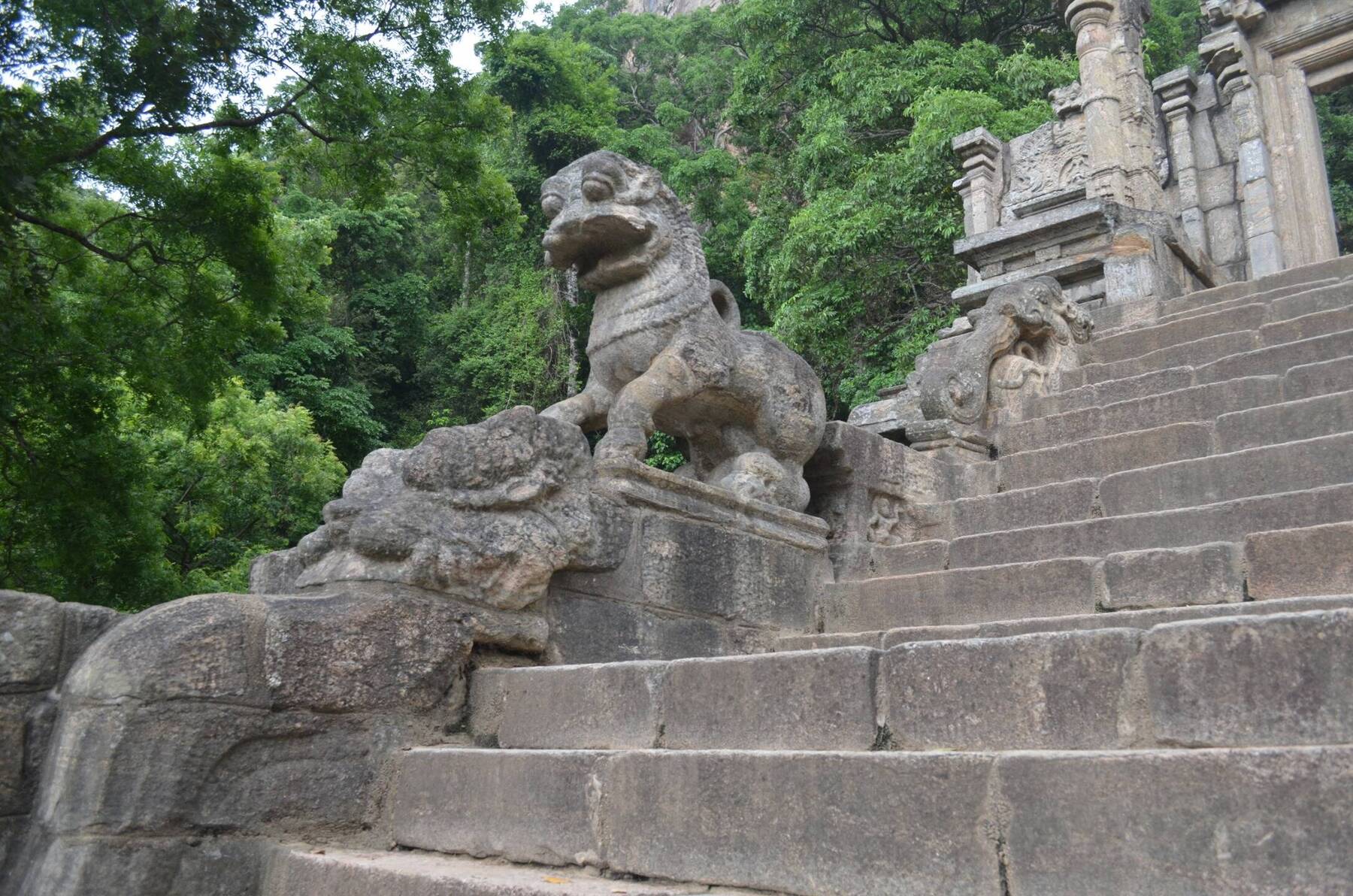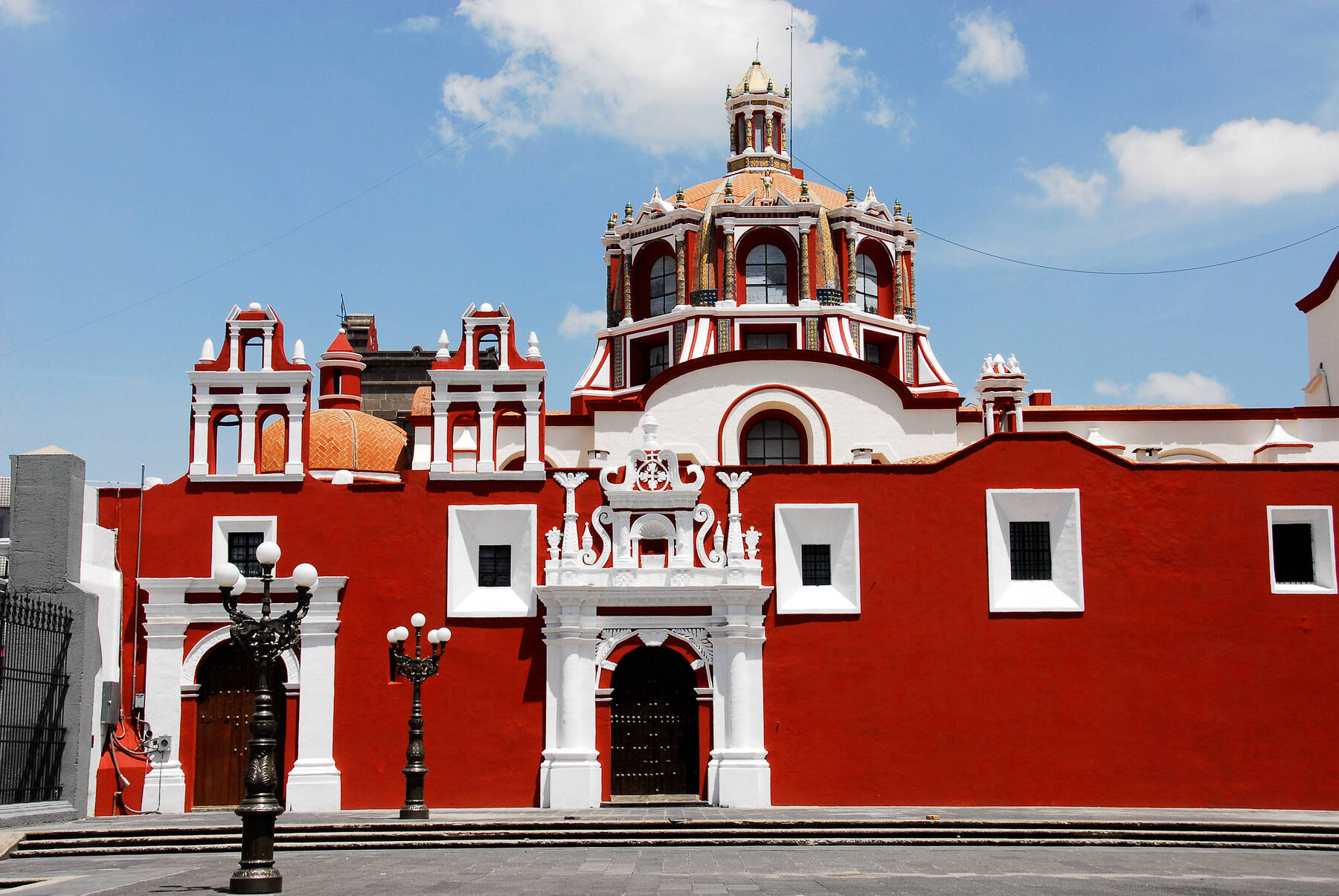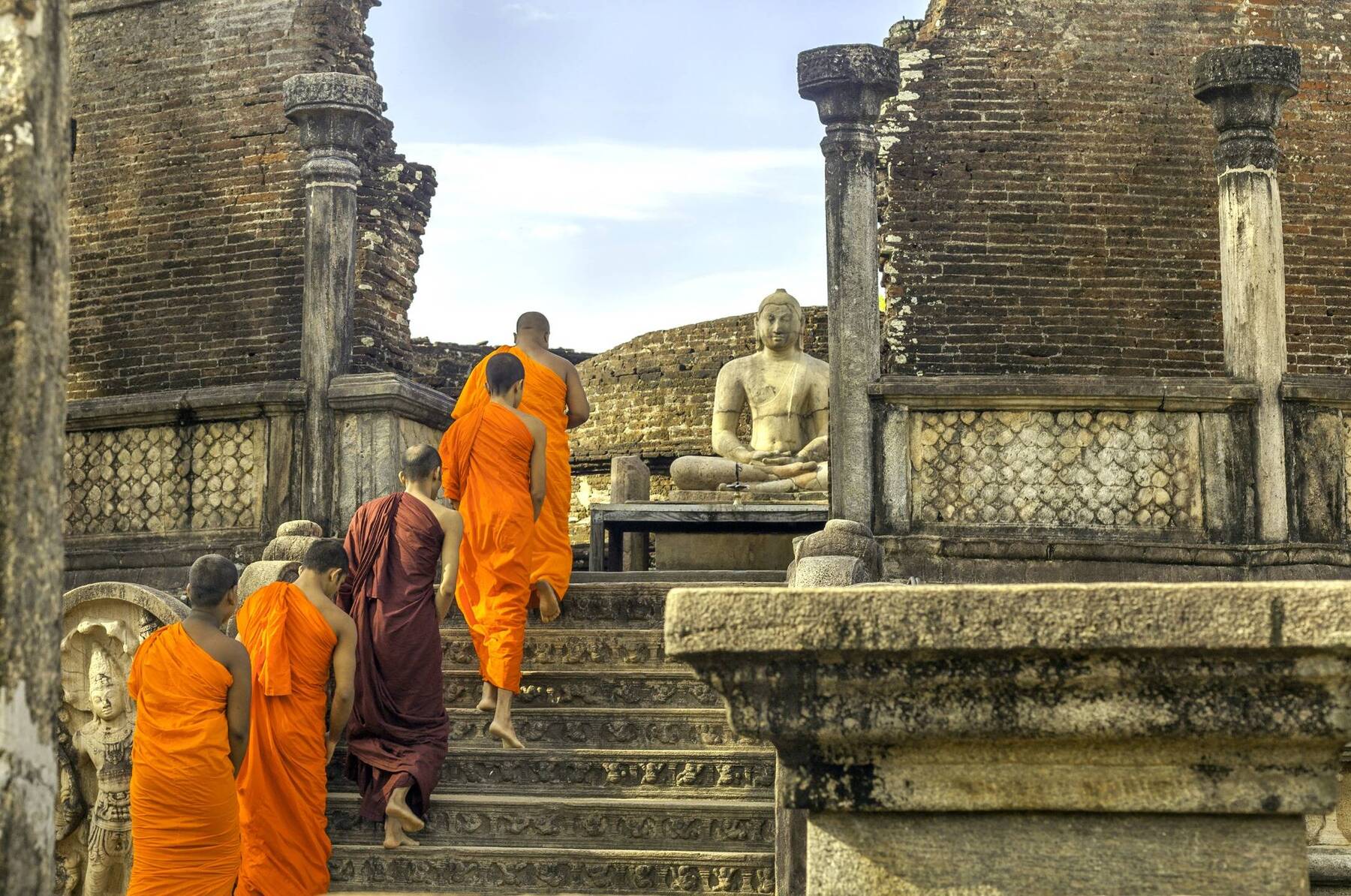Sigiriya
Climbing the rock fortress of Sigiriya is touted as one of the most-wanted thrilling experiences in Sri Lanka. One just needs to Google the photographs to agree. This 656-foot monolith of a gigantic rock head jutting out of the dark green jungles is a jaw-dropping sight to behold as much as from a distance as from up close. What is even more fascinating is the fact that Sigiriya is an extinct volcano with sheer walls carved in the shape of a lion-shaped citadel, with a terraced city at its feet and a palace at its summit. A jittery climb of 1,200 steps up a stone stairway through the lion’s giant paws, mouth and throat come with unique rewards. The view from the plateau of ruined palaces and pools over the wild Sri Lankan jungles will inevitably make you marvel at 5th-century engineering and ancient urban planning of King Kashyapa’s stronghold. Reinvented as a one-of-a-kind Buddhist pilgrimage site after it fell into ruins, Sigiriya boasts of the oldest and best-preserved Sinhalese wall graffiti. Look out for the 1,000-years old hand-painted bedecked maidens in vibrant reds, yellows and greens on the Mirror Wall, halfway up the rock face. Quite a choice for a UNESCO World Heritage tag. After all, it also has Asia’s oldest landscaped garden and a sophisticated pumping system to boot.













Comments